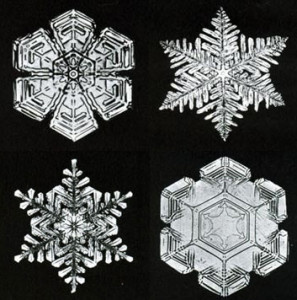If you need that heavy sweater once more, blame it on Sophie. May 15 is the day of Cold Sophie, a bit of old weather folklore from Northern Europe and especially Germany. Cold Sophie is usually winter’s last hurrah, sending a blast of cold icy air down from the North. Summer may be a-comin’ in, but Cold Sophie will remind you of winter’s power as she says farewell for a while with a kindly reminder: “I’ll be back. Don’t get too comfortable.”
Cold Sophie is Saint Sophia, and she is but one of a group of saints known in Germany as die Eisheiligen, or the Ice Saints. The Ice Saints are Saints Mamertus, Pancras, Servatius, Boniface, and Sophia, and their feast days begin on the 11th of May with St. Mamertus and continue on to St. Sophia on the 15th. It is a time of traditionally colder weather in Northern Europe, and anyone who planted their gardens ahead of Cold Sophie was thought to be a fool indeed, for Cold Sophie’s cold damp days would quickly do in all efforts of any and all overly-ambitious gardeners with a solid reminder of who is in charge. Cold Sophie returns each mid May to gently keep us in our place and help us keep in mind that all we do is in partnership with the planet and its elements.
So, considering saints all begin as everyday joes like you and me, who were these folks? St. Mamertus (May 11) was a fifth century bishop in France. His diocese was much afflicted by catastrophes, ranging from fires to earthquakes, and his regimen of fasting and prayer is thought to have delivered the region from its ill fate. St. Pancras (May 12) was a fourth century martyr of Rome, beheaded at the very young age of only 14 and so he is a patron saint of children. St. Servatius (May 13) is the patron saint of the city of Maastricht in the Netherlands, where he died as bishop in 384. His relics are kept there in the Basilica of St. Servatius in a gilded chest that is processed through the city once every seven years. St. Boniface of Tarsus (May 14) was a fourth century Roman martyr, a slave tossed into a cauldron of boiling tar. Boniface, however, was dropped from the calendar of saints for possibly not having actually existed. But it’s tough to keep a good legend down.
And finally we have St. Sophia herself (May 15), the ring leader of all the Ice Saints. Little is known of her life, but she, too, was a martyr of the early Christian movement in Rome. One of her attributes is a book, which, as a book artist myself, I rather like. She goes by many names: Cold Sophie in Germany and Poland, but amongst the Czechs she is known as Sophia the Ice Woman, and in Slovenia, Pissing Sophie. (I have no explanation, sorry. Any Slovenians care to chime in?)
The Ice Saints do not hold much sway here in Lake Worth. Once summer makes its presence known here, it tends to stay put and that is pretty much that, and we won’t be counting on another blast of cold weather until autumn returns, which is quite all right; this is as it should be. But if we should wake up on the 15th of May and find the temperature even just a few degrees cooler than normal, we can nod to the breeze and thank Cold Sophie.
Image: Four ice crystals photographed by William “Snowflake” Bentley in the late 19th and early 20th centuries. Bentley was a Vermont photographer who captured thousands of snowflakes on film. Still, he lamented missing the billions of snowflakes he never got to photograph.
